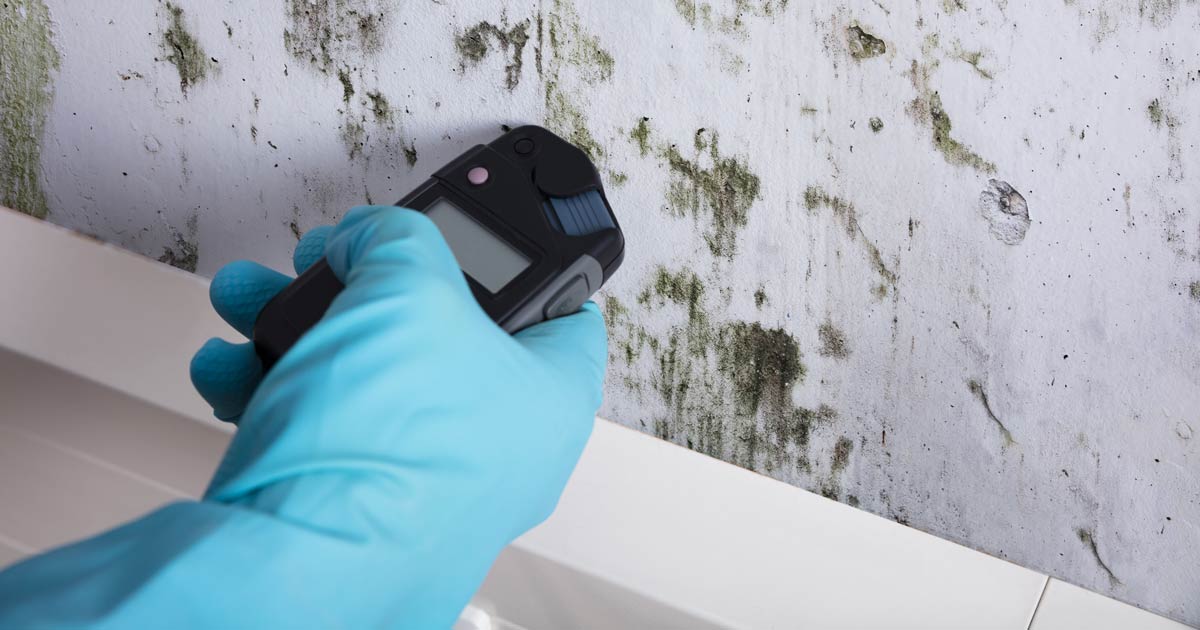Accessing Local Post Remediation Mold Testing Near Me
Accessing Local Post Remediation Mold Testing Near Me
Blog Article
Effective Blog Post Mold Removal Solutions for Your Home
Mold and mildew development in homes can be a relentless concern, commonly calling for an organized strategy for reliable post-remediation options. From comprehending the factors that add to mold growth to applying correct cleansing techniques and moisture control measures, the process can be complex yet essential for keeping a healthy living setting. Furthermore, discovering natural remediation solutions and developing a routine for ongoing upkeep are necessary elements of an extensive mold removal method. As property owners strive to resolve mold and mildew issues, finding one of the most effective services becomes vital for the health of their households.
Understanding Mold Growth Variables
The primary factor adding to mold growth is moisture. Mold spores require moisture to germinate and flourish, making damp or moist atmospheres extremely vulnerable to mold infestations.

Additionally, air movement and light exposure can influence mold development. Areas that do not have correct ventilation and all-natural light are more vulnerable to mold and mildew advancement. By addressing these elements adequately, individuals can successfully alleviate mold growth and safeguard their living environments.
Correct Mold Cleansing Techniques
Making use of reliable cleansing approaches is essential in avoiding the reoccurrence and dealing with of mold contamination in indoor environments. The first action in correct mold and mildew cleaning is to contain the affected location to stop the spread of spores to unpolluted areas.

Executing Wetness Control Actions
To properly stop mold growth and contamination in interior atmospheres, implementing wetness control measures is extremely important. Furthermore, ensuring correct ventilation in locations prone to moisture accumulation, such as see restrooms and cooking areas, can help lower the danger of mold and mildew growth. By carefully carrying out these wetness control procedures, house owners can successfully minimize the likelihood of mold and mildew recontamination and preserve a healthy and balanced interior environment.
Utilizing All-natural Remediation Solutions
After effectively implementing wetness control actions to avoid mold and mildew development in interior environments, property owners can currently discover the effectiveness of natural remediation options in keeping a healthy space. All-natural removal services use eco pleasant methods to fight mold and mildew and mold, making them a preferred selection for those seeking non-toxic continue reading this alternatives. One such service is utilizing vinegar, an all-natural antimicrobial representative, to tidy and disinfect surface areas infected by mold and mildew. Simply water down vinegar with water and spray it onto the impacted areas, enabling it to sit for a few hours before wiping clean. Furthermore, tea tree oil, understood for its antifungal residential or commercial properties, can be blended with water and sprayed onto mold-infested surfaces to inhibit further growth. Another natural option is hydrogen peroxide, which can effectively kill mold and mildew on numerous surface areas without leaving dangerous deposits behind. By integrating these natural remediation solutions into their cleansing regimens, home owners can properly deal with mold growth while advertising a much healthier interior environment for themselves and their households.

Preserving a Mold-Free Setting
In order to stop mold and mildew recurrence and ensure a constantly mold-free environment, it is vital for home owners to execute aggressive upkeep practices. On a regular basis inspecting areas susceptible to mold and mildew development, such as bathrooms, basements, attics, and kitchens, is critical. Addressing any leaks, water damage, or excess wetness immediately can dramatically reduce the threat of mold and mildew development. Post Mold Remediation Report. Appropriate air flow in locations with high moisture degrees is likewise key to stop mold development. Making use of dehumidifiers or exhaust followers can assist preserve optimal moisture degrees and discourage mold and mildew spores from growing.
Furthermore, keeping sanitation in the home is vital for mold prevention. Keeping interior plants in check and making certain correct drainage in outdoor landscaping can reduce moisture build-up, decreasing the possibility of mold invasions.
Final Thought
In verdict, it is necessary to address mold growth variables, utilize proper cleaning methods, apply wetness control measures, use all-natural remediation remedies, and preserve a mold-free setting in order to successfully deal with article mold remediation in your house learn this here now - Post Remediation verification. By adhering to these strategies, you can stop mold and mildew from repeating and make sure a healthy living atmosphere for you and your household
The key factor contributing to mold and mildew development is moisture. Mold spores need dampness to sprout and prosper, making wet or moist atmospheres very susceptible to mold infestations.To properly avoid mold and mildew development and contamination in interior environments, carrying out dampness control actions is paramount. Additionally, making sure appropriate air flow in locations vulnerable to moisture build-up, such as bathrooms and kitchens, can assist decrease the danger of mold growth.After effectively carrying out wetness control procedures to stop mold growth in indoor environments, property owners can now explore the effectiveness of natural removal remedies in keeping a healthy and balanced living room.
Report this page